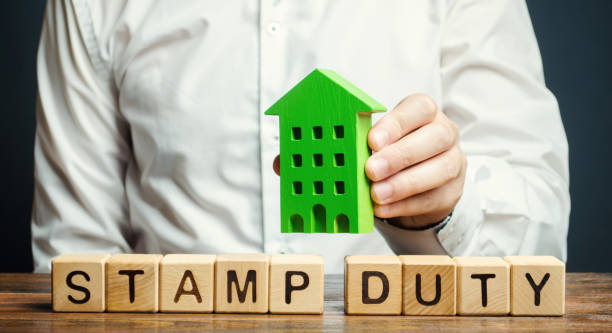Most economists and politicians think stamp duty is an unpopular tax. However, most state and territorial governments depend on it to pay for their electricity.
This tax is a disgrace since it charges homeowners whenever they move because they’ve relocated. At a rate of $40,000 per move for the median price of a home in Sydney or Melbourne, that’s enough to deter those who want to move for a better job or move to a larger or smaller house with children or when their children leave.
It’s even a de facto tax on divorce. If a home belonging to a family member is sold to enable the division of assets in a divorce, every member of the divorcing couple is required to pay stamp duty to buy another home. This is the main reason that more than half separated women who have their homes sold don’t purchase another home within 10 years.
And it’s unfair. Stamp duty hits most the younger households that move around the most. It leaves alone the older residents who stay put.
The latest model developed by Victoria University’s Centre for Policy Studies at Victoria University finds abolishing stamp duty and replacing the revenue lost by taxes on land would result in a downward pressure on the cost of buying of around 4.7 percent and upward pressure on the price paid by sellers, which is around 0.1 0.1%.
In 2018, the Grattan Institute found a national shift away from stamp duties to tax on land could be worth $17 billion a year in gross domestic product.
The majority of states aren’t actually removing stamp duty.
As of now, only one territory or state that is that of the Australian Capital Territory is the only one to have decided to take the plunge. Some are simply tinkering with stamp duty to establish what could be an actual first-home-buyer grant.
The ACT is about to complete the actual transition, which is designed to last 20 years.
In Victoria The Andrews government is simply expanding an existing system of exemptions for first-time buyers who meet the criteria currently available. NSW, Queensland, Western Australia and Tasmania are also offering exemptions.
As we approach the election in March in the lead-up to the March election NSW government and the opposition are in a race to one-up one another with their different policies that could help more home buyers who are first-time buyers a chance to not pay stamp duty.
Read more: Stamp duty is an economic drag. Here’s how to move to a better system
The NSW Labor opposition pledged to abolish stamp duty altogether for first home buyers purchasing properties worth up to $800,000 — expanding the current exemption which is for homes worth up to $650,000. First home buyers purchasing more expensive homes worth up to $1 million will be offered a discount.
It is reported that the Coalition administration has enacted legislation to give first-time homeowners the possibility of paying a monthly land tax instead of stamp duty when they purchase an investment property that is worth more than $1.5 million.
In limiting these exemptions for first-time home buyers Both sides of NSW government as well as other government bodies are delaying the main benefit of eliminating stamp duty, which is to eliminate the tax on the act of moving.
A majority of these programs such as the two that are available in NSW have a value of just greater than initial home buyer’s grants. The past has shown that such the grants tend to boost the cost of homes.
Axing stamp duty actually means substituting it with something else
Stamp duty is crucial in helping states pay their expenses. Every state or territory including the ACT make use of the tax to collect at a minimum one-fifth portion of their tax revenue.
Does not include Commonwealth grants. Grattan analysis of each state or territory’s most recent budget
These revenues pay to keep our hospitals running and schools open.
NSW anticipates collecting around 10 billion dollars through stamp duty during this fiscal year.
Contrast this with Labor’s NSW offer for first-time home purchasers will run $722 million over the first three years. The Coalition’s giveaway will be $728 millions over the course of four years.
To get rid of stamp duty we must substitute it with a different one. Land tax is an excellent option because it doesn’t affect the decision-making process of people.
While homeowners are able to get around paying stamp duty by refusing to move the land isn’t movable and therefore land tax cannot be avoided.
The NSW Coalition government started with bolder plans for a meaningful transition, until a scare campaign and the opposition from Labor and the Greens forced it to wind it back.
This has put NSW Labor in the unfortunate situation of not only being against the tax that is a bad thing (stamp duty) however, they are also against the tax that should need to be replaced by it: the land tax.
Other options, such as raising the value of tax on goods and services to pay for eliminating stamp duty appear to be less likely.
NSW is caught in a tangle in which stamp duty appears to be here to remain.
The ACT will show the method
The approach of the Australian Capital Territory of reducing a tax slowly while increasing it slowly proves that it is possible to do.
